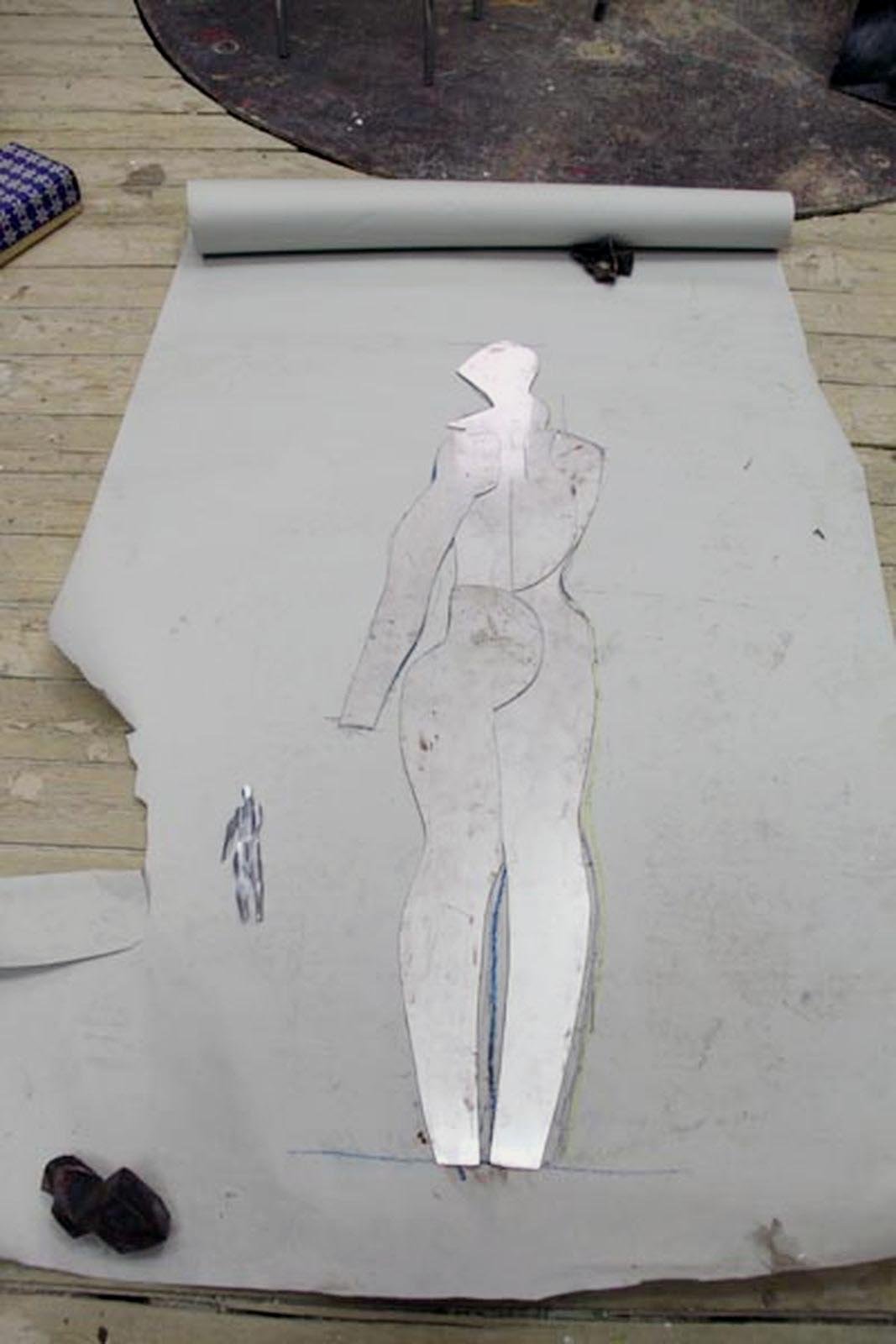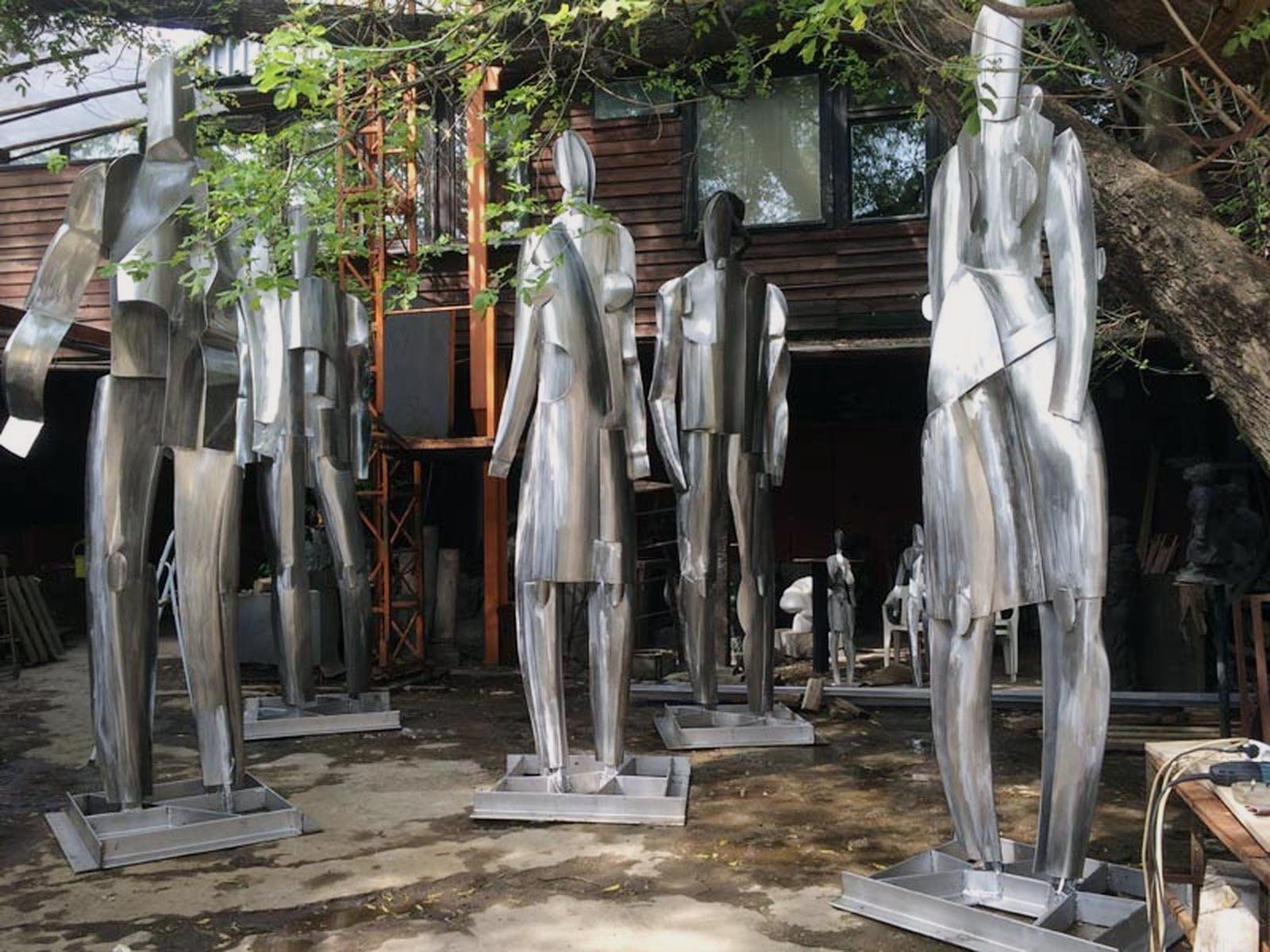White City
2014
Stainless steel
7 sculptures, 3.5 m each (11 ft. 6 in.)
Moscow
Georgy Frangulyan's striking sculptural composition titled White City goes beyond the traditional idea of sculpture. The three-and-a-half-meter-tall figures made of stainless steel using the collage technique are inscribed by Frangulyan into the surrounding space, creating a unitary piece that blends seamlessly into the urban environment. Seven sculptures, seven representatives of the metropolis; they are conditional and faceless, yet each figure is individualized and complete. Their steel surfaces reflect the poetry of urbanism. They are residents of a large city in which anonymity does not contradict individuality. The sculptural pattern is peculiar: Georgy Frangulyan paid special attention to the precision and clarity of the steel silhouettes, which are meant to emphasize the rationality and precision of the city.
The sculptures are installed at the intersection of Butyrsky Val and 1st Tverskaya-Yamskaya Street. The placement of abstract steel sculptures in this location is not accidental. Tverskaya Zastava Square has long been a subject of discussion among Moscow's architects and urban planners. While its fate was being decided, the square, along with the adjoining blocks, became a meeting place and a compositional confrontation of several historical eras, becoming a kind of miniature model of a modern city that grows rather chaotically yet leaves space for various manifestations of the diverse life of a metropolis.
The material is also chosen with a purpose. The six-millimeter-thick stainless-steel sheets fit organically within the architectural complex where they stand-with its glass and its lights, its own stainless-steel elements-suggesting a transitional, in-between point on a scale that spans people and huge buildings.
The sculptural composition is built into the pedestrian part of the White Square complex. The figures, as conceived by George Frangulyan, are part of the city, and being as they are among people, merging with the pedestrian flow and the surrounding landscape, the figures take part in the life of the city. In these abstract steel figures Georgy Frangulyan has attempted to balance the contradictory scale of the buildings at Tverskaya Zastava Square, by offering a transitional stage between a real person and the buildings of the White Square complex.
Frangulyan's conceit is that the figures should emphasize the full range of tasks facing urban sculpture. Rather than being illustration or commentary on any particular event, or, for that matter, a 'monument', this composition becomes a decorative element of the urban environment-an element that can embody a compromise between the architecture of different periods and styles. In the end, this composition evinces an equal relationship to both man and architecture.
This project was made possible by the direct support of Boris Mints, Chairman of the Board of the 01 Group investment company.

















